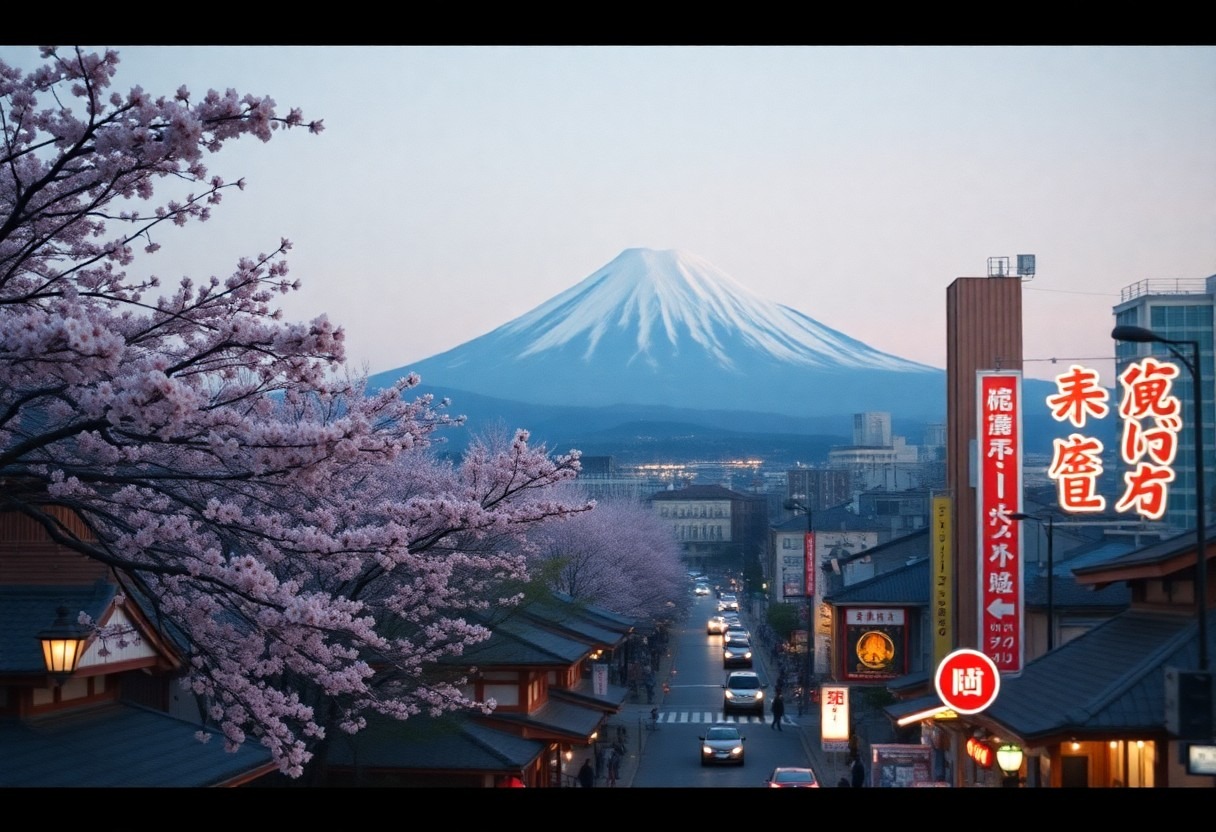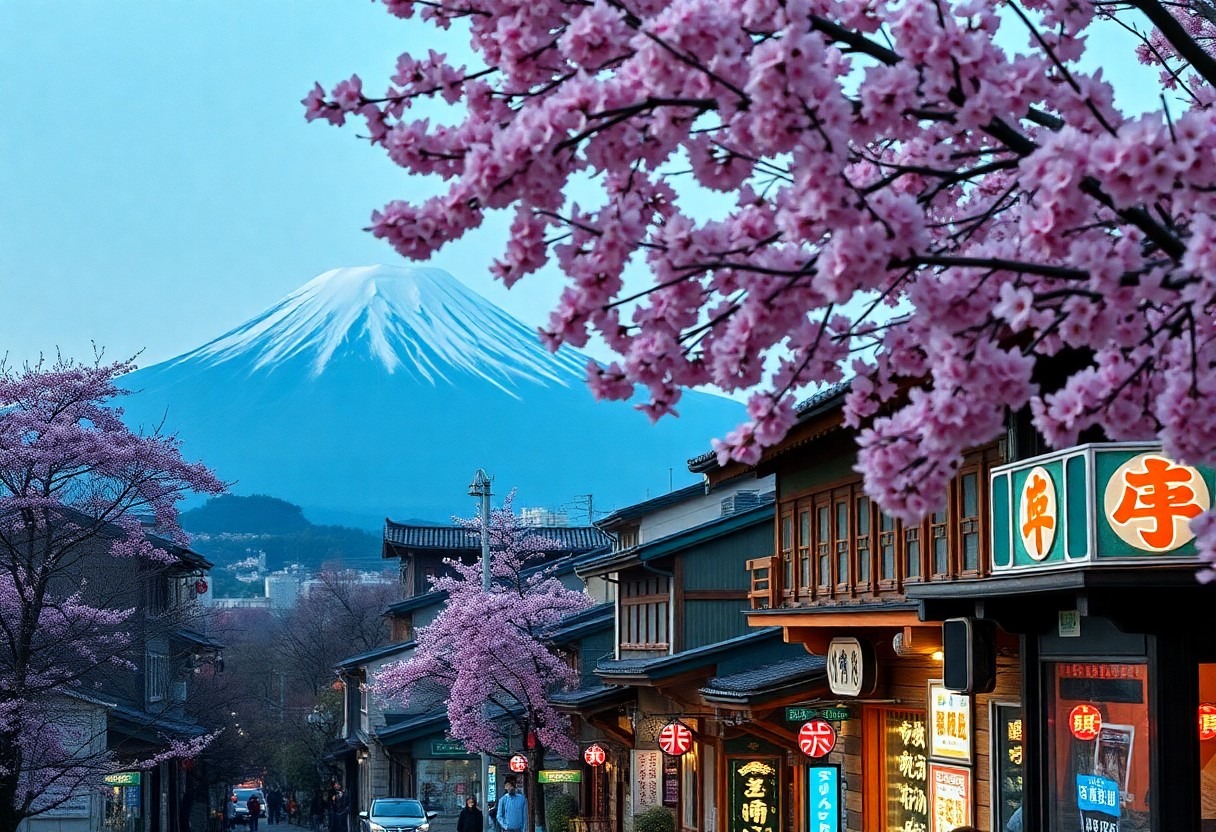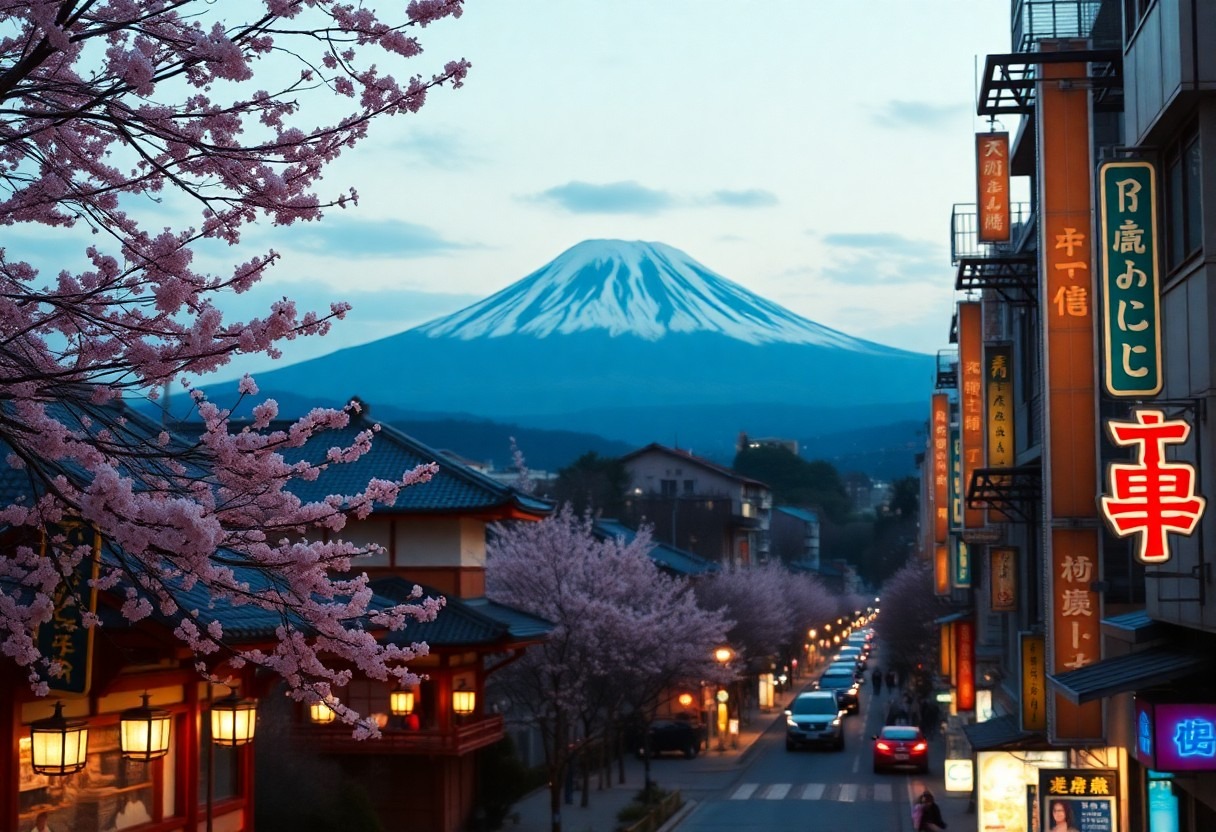Your upcoming journey to Japan presents an exhilarating chance to immerse yourself in a culture rich in history, technology, and culinary delights. Maximizing your travel experience is essential when visiting this incredible destination. With countless attractions and activities at your fingertips, designing the perfect Japan itinerary can feel overwhelming. As you prepare for your adventure, be sure to consider your budget and preferred transportation options, as they are vital to enhancing your travel experience in this beautiful country. Whether you choose to rent a car or take advantage of Japan’s extensive and efficient train system, careful planning will ensure that your journey is both enjoyable and seamless. Make it a priority to explore the vibrant streets of Tokyo, the cultural treasures of Osaka, and many other iconic locations. This guide will help you create an unforgettable travel experience throughout Japan.
Tailor Your Japan Itinerary: Explore Various Options Based on Your Interests
As you start your trip planning process for Japan, you’ll find a variety of itinerary types designed to suit your personal interests and the time frame you have available. You might select a 7-day itinerary that takes you from the lively streets of Tokyo to the tranquil mountain retreats, or a 10-day itinerary that allows you to dive deeper into the enchanting Kansai region and its surrounding areas. Here are several itinerary options worth contemplating:
- 7-day itinerary: This option is ideal for travelers eager to savor the highlights of Tokyo, alongside breathtaking views of the Japanese Alps and rejuvenating natural hot springs.
- 10-day itinerary: Perfect for those who wish to delve into the rich history and vibrant culture of the Kansai area, visiting cities like Osaka, Nara, Kyoto, Kobe, and Hiroshima.
The following table succinctly summarizes these two itinerary options:
| Itinerary | Duration |
|---|---|
| 7-day itinerary | 7 days |
| 10-day itinerary | 10 days |
| Distance covered | 260 mi (7-day), 280 mi (10-day) |
| Highlights | Natural hot springs, Mount Fuji, snow monkeys (7-day), culinary experiences in Osaka, sacred deer encounters, Gion district, Peace Memorial Park (10-day) |
| Suitable for | Urban explorers, wellness seekers, mountain enthusiasts (7-day), history aficionados (10-day) |
By understanding the various types of Japan itineraries available, you empower yourself to plan your journey in line with your unique preferences and interests.
Experience the 7-Day Itinerary: Journey from Tokyo to Scenic Mountain Retreats
Japan’s most unforgettable experiences are often found within the bustling metropolis of Tokyo and the stunning mountain landscapes. This 7-day itinerary guides you through captivating destinations such as Hakone, Matsumoto, and Shibu Onsen. You’ll have the opportunity to rejuvenate in soothing hot springs, marvel at breathtaking scenery, and fully immerse yourself in authentic Japanese traditions and culture.
Embark on the 10-Day Itinerary: A Cultural Expedition Through Kansai and Beyond
This in-depth 10-day itinerary allows you to explore the Kansai region and beyond, featuring vibrant cities such as Osaka, Nara, Kyoto, Kobe, and Hiroshima. This itinerary is particularly well-suited for history enthusiasts and those eager to engage with the region’s unique cultural landscape.
This enriching 10-day itinerary strikes a perfect balance between urban exploration, historical discovery, and cultural immersion, offering an exceptional opportunity to savor delicious local cuisine, visit iconic landmarks, and delve into Japan’s profound historical narrative. Opting for a car rental enhances your flexibility, allowing you to navigate between destinations while enjoying breathtaking views of the Japanese countryside. Renting a car is an excellent method for discovering Japan, and with a well-structured itinerary, you can optimize your travel moments to the fullest.
Crucial Tips for Efficiently Planning Your Japan Trip
For anyone preparing for a trip to Japan, there are several key factors that should be considered to ensure you make the most of your travel experience. As you plan your adventure, reflect on your budget, the most suitable mode of transportation, and the ideal time of year for your visit. Here are some fundamental tips to help you get started:
- Customize your itinerary to fit your specific interests and the destinations you wish to explore.
- Determine the best mode of transport for your journey, whether that involves car rental, train travel, or flying.
- Select the ideal time to visit Japan based on your personal preferences and budget considerations.
By recognizing the importance of careful planning, you can ensure a smooth and enjoyable trip to Japan.
Your Essential Guide: Arriving in Japan
When traveling to Japan, you can land at one of the country’s major international airports, such as Tokyo’s Haneda or Narita airports, or Osaka’s Kansai airport. The average cost of a direct flight from London to Tokyo is around £918. Utilizing a flight comparison tool like KAYAK can assist you in finding the best available deals for your travel dates.
Choosing the Best Transportation Mode for Your Japan Journey
If your objective is to explore the diverse landscapes and urban environments of Japan, it is crucial to select the most convenient mode of transportation for your journey. Most itineraries can be navigated using car rental, train services, air travel, or a combination of these options. Your budget and the number of travel companions will significantly influence your choice of transportation.
Additionally, when determining your ideal mode of transport, consider the distance you plan to travel and the time available for your trip. If your itinerary encompasses multiple cities and rural locales, opting for a car rental may provide the most convenience, allowing you to travel at your own pace and uncover hidden gems in the countryside. However, if driving is not your preference, Japan’s highly efficient and reliable train network serves as an excellent alternative.
Identifying the Best Times to Visit Japan for Your Itinerary
Considering the multitude of attractions and experiences Japan offers, the best time to visit depends on your personal preferences and budget. Based on travel trends, October emerges as the most popular month for visiting Japan, followed closely by March and April, which coincide with the breathtaking Sakura (cherry blossom) season. If you can tolerate heat and humidity, August could be a great time to visit, offering lower prices and fewer crowds.
For instance, if experiencing the iconic cherry blossoms is on your bucket list, planning your trip during March and April is the best choice. However, be prepared for this busy travel period, as accommodation and flight prices may rise significantly. Conversely, if you prefer milder weather and more budget-friendly options, consider traveling during the spring or autumn months.

Step-by-Step Guide to Creating Your Ideal Japan Itinerary
Your dream trip to Japan can transform into reality through meticulous planning. To assist you, we have put together a structured, step-by-step guide on how to develop the ideal itinerary that caters to your preferences.
Below is a comprehensive breakdown of the essential steps to curate your perfect Japan itinerary:
| Step | Description |
|---|---|
| 1. Evaluate Your Budget | Determine how much you are willing to spend on your Japan trip, including flights, accommodation, meals, and activities. |
| 2. Select Your Destinations | Identify the locations you wish to explore in Japan, such as Tokyo, Osaka, Kyoto, and Hiroshima. |
| 3. Arrange Your Accommodation and Transportation | Book your lodging, whether it’s hotels, ryokans, or hostels, and organize your transportation arrangements, including trains, flights, or car rentals. |
Step 1: Evaluate Your Travel Budget for an Unforgettable Trip
As you embark on planning your journey to Japan, it is essential to set your budget. This should include costs associated with flights, accommodation, meals, and entertainment. Current data shows that the average price for a double room in Tokyo is approximately £131 per night, while a rental car in the city typically costs around £66 per day.
Step 2: Selecting Your Destinations and Experiences in Japan
Your journey to Japan opens the door to numerous amazing locations to discover, including Tokyo, Osaka, Kyoto, and Hiroshima. Your choice of destinations should align with your interests, whether they gravitate toward history, culinary delights, or the beauty of nature.
It is crucial to take into account the distances between your chosen destinations and the time required to travel from one location to another. For example, the distance from Tokyo to Osaka is approximately 280 miles, and the journey generally takes around 5 hours by train or car.
Step 3: Booking Your Accommodation and Transportation Options
Systematically proceed to book your accommodation and transportation. Your lodging options range from hotels and ryokans to hostels, and you’ll also need to arrange your transportation, including trains, flights, or car rentals. It is recommended to secure your accommodation and transport well in advance to avoid inflated prices and potential availability issues.
Your accommodation choices in Japan span from budget-friendly hostels to luxurious hotels and traditional ryokans. Additionally, consider renting a car to explore Japan’s picturesque countryside and hidden treasures. With thoughtful planning, your adventure to Japan can culminate in an unforgettable experience.

Key Considerations for Planning Your Japan Travel Experience
While the excitement of traveling to Japan is undeniable, several important factors should be assessed to ensure a smooth and enjoyable journey. As you plan your trip, it’s vital to consider transportation, budget, and accommodation options. Here are some key elements to keep in mind:
- Mode of transport: Your choices include traveling by car, train, or airplane, depending on your budget and personal preferences.
- Budget: Anticipate that your daily expenses will vary based on the type of accommodation, food choices, and activities you select.
- Accommodation: You can choose from hotels, hostels, or ryokans, depending on your financial means and preferences.
Effective preparation and thorough research are the foundation of a successful trip.
Budget Breakdown for Your Comprehensive Japan Itinerary
Typically, your financial plan for a trip to Japan will depend on your personal preferences and current exchange rates. The average cost for a double room in Tokyo is around £131 per night, while a bed in a hostel is priced at approximately £51 per night. If you’re considering a car rental, you should expect an average daily expense of £66.
Understanding Road Conditions and Driving Regulations in Japan
Japan features well-maintained roads, making driving an attractive option for exploring the country. However, it is crucial to familiarize yourself with the left-hand traffic system and obtain an International Driving Permit to legally operate a vehicle.
Understanding the road conditions and driving laws in Japan is essential for a safe and enjoyable experience. For detailed information about driving in Japan, refer to the Japanese Automobile Federation website. Additionally, be aware of the significant toll costs and the type of vehicle you choose to rent, as these factors can affect your fuel expenses.
Weather Patterns and Climate Variability in Japan
Despite careful planning, weather conditions in Japan can be unpredictable. The country experiences a temperate climate characterized by four distinct seasons, with weather variations that depend significantly on the region.
Japan’s climate varies from subtropical in the southern areas to temperate in the northern regions. For the best travel experiences, consider visiting Japan during the spring or autumn months, when the weather is typically mild and pleasant. However, if you seek a unique experience, consider scheduling your visit during the cherry blossom season in March and April, or during the winter season for skiing and relaxation in hot springs.
Weighing the Advantages and Disadvantages of Different Transportation Options in Japan
As you plan your trip to Japan, it’s critical to assess the pros and cons associated with various modes of transportation. The table below highlights the primary advantages and disadvantages of each option:
| Transportation Mode | Advantages and Disadvantages |
|---|---|
| Train | Convenient, efficient, and features an extensive network, though it can be costly |
| Car Rental | Offers flexibility and freedom to explore; however, it requires an International Driving Permit and can be expensive |
| Flight | Quick and convenient for long distances, but can be pricey and has limited route options |
| Bus | Cost-effective and connects many routes, yet can be less convenient and time-consuming |
| Subway | Efficient and convenient for urban travel, but may be crowded and confusing for newcomers |
Clearly, each mode of transportation presents unique benefits and drawbacks. It is essential to evaluate your budget, preferred travel style, and intended destinations when determining which transportation option best suits your needs.
Assessing the Pros and Cons of Renting a Car in Japan
Renting a car in Japan can be an excellent way to explore the country, but it’s important to consider the advantages and disadvantages. The table below summarizes the key benefits and drawbacks:
| Advantages | Disadvantages |
|---|---|
| Provides flexibility and freedom to explore | Requires an International Driving Permit |
| Can be cost-effective for groups or long road trips | May be costly for solo travelers or short distances |
| Facilitates scenic routes and rural exploration | Potentially requires additional insurance and incurs toll fees |
Evaluating the Benefits and Drawbacks of Utilizing the Japan Rail Pass
| Advantages | Disadvantages |
|---|---|
| Convenient and efficient travel option | Can be costly, particularly for short trips |
| Covers a wide range of routes and train options | May not be economical for solo travelers or limited travel |
| Facilitates scenic routes and rural exploration | Requires thorough planning and research to maximize benefits |
The Japan Rail Pass can be a cost-effective choice for travelers intending to cover extensive distances or visit numerous cities. However, it is crucial to calculate the costs and compare them against individual train ticket prices to ensure you secure the best value. While the Japan Rail Pass offers convenience and efficiency, it’s essential to plan ahead and research the various routes and trains included in the pass to make the most of your experience.
Understanding the Pros and Cons of Air Travel in Japan
When considering air travel, it’s wise to weigh the advantages and disadvantages while also exploring alternative transportation options.
In summary, each transportation mode in Japan has its unique pros and cons. By evaluating your budget, travel preferences, and destinations, you can select the most suitable option for your adventure and maximize your time in Japan. Always remember to conduct thorough research and plan ahead to ensure a smooth and enjoyable trip.

Detailed Itinerary for 7-Day and 10-Day Japanese Adventures
To enhance your travel experience in Japan, a well-thought-out itinerary is crucial. Below is an overview of what you can expect during both the 7-day and 10-day excursions.
7-Day Itinerary: In-Depth Day-by-Day Exploration
Throughout your 7-day journey, you will travel through Tokyo, Hakone, Matsumoto, and Shibu Onsen. Anticipate visiting rejuvenating hot springs, witnessing the grandeur of Mount Fuji, and enjoying the picturesque landscapes of the Japanese Alps.
10-Day Itinerary: Comprehensive Day-by-Day Experience
To fully immerse yourself in the Kansai region, your 10-day itinerary will encompass captivating explorations of Osaka, Nara, Kyoto, Kobe, and Hiroshima. Delight in Osaka’s culinary treasures, interact with the sacred deer in Nara, and explore Kyoto’s renowned Gion district.
This extensive 10-day itinerary allows you to discover the rich tapestry of history and culture that defines the region, including a visit to the significant Peace Memorial Park in Hiroshima. By securing a rental car, you’ll enjoy the freedom to explore at your leisure, but it’s crucial to check road conditions and traffic regulations before embarking on your journey. The estimated budget for this trip is approximately £885 per person, based on double occupancy, covering up to 300 miles. Don’t miss the opportunity to rent a car and consider acquiring a Japan Rail Pass for added convenience. This itinerary promises an enriching experience through Japan’s hot springs, traditional inns, and unforgettable memories.
Your Adventure Awaits: Start Planning Your Japan Journey
With the information provided, you now have the tools to effectively plan your Japan itinerary. You are aware of the best modes of transport, optimal times to visit, and how to budget for your travel experience. Renting a car can significantly enhance your exploration of Japan, but be sure to account for fuel and toll costs. Armed with this comprehensive guide, you are well-prepared to begin the planning process for your upcoming journey to Japan.
Frequently Asked Questions About Traveling in Japan
What is the best way for a first-time traveler to navigate Japan?
The best way for a first-time traveler to navigate Japan depends on their budget and the destinations they wish to visit. Options include traveling by car, train, or airplane, or a mix of these. For those considering a road trip, renting a car is viable, but an International Driving Permit is necessary. The Japan Rail Pass is another excellent option for train travel.
When is the optimal time for a first-time traveler to visit Japan?
October is considered the most favorable month for visiting Japan, followed by March and April, during the enchanting cherry blossom season. The least popular months are January, February, and August; however, August may still appeal to those who can tolerate heat and humidity, while winter provides access to fantastic ski resorts.
What are the costs associated with renting a car in Japan, and what advantages does it offer for road trips?
The average daily cost for a rental car in Tokyo is approximately £66. Renting a car is especially advantageous for road trips, particularly for families or groups, as it can be more economical than other transportation methods. However, an
Categories:
Tags:





Comments are closed